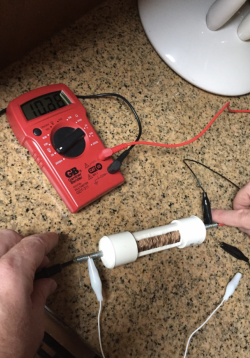Let's Build Our Wind and Solar Energy Toy
Students will combine what they learned in previous lessons using their investigations of convection-related phenomena to design a device that will convert light energy from the sun into thermal energy and utilize the resulting convection currents. Their...
Learning About Solar Updraft Towers
This lesson helps students learn about solar updraft towers being planned and built around the world to help solve the energy crisis by using unlimited power from the sun. This will provide real world context to the engineering challenge they engaged in...
How might we design a battery that reduces e-waste? Phenomenon and Exploration
During this introduction lesson series students will explore the guiding phenomenon to understand e-waste and connect it to battery design. Students will utilize online resources to learn about problems from e-waste around the world and the environmental...
Exploring Eco-Friendly Battery Design
In this lesson students will experiment with everyday household items to make batteries. Students will use lemons, potatoes, pennies, and cola to make batteries, and compare the amount of voltage produced. These lessons can be expanded to test a variety of...
Unit Plan: Understand E-Waste Through Battery Design
In this lesson students will further explore their understanding of energy, electricity, and basic circuits. Students will begin their exploration of batteries by questioning where batteries end up when we are done using them, making connections to e-waste...
Energy Sort
Students will be put in groups of six to eight students. Each group will have images of various items that produce heat (light bulb, hair dryer, refrigerator, computer, game system, television, car, motorcycle, microwave, space heater, etc.). The goal is...
Brainstorm Energy Source
Students will individually brainstorm sources of energy. This process will take place on both an individual and on a group level, allowing for students to share ideas about their perceptions of energy. On a sheet of paper, students will write or draw...
Energy Research Project
Students will build on their knowledge of renewable and non-renewable energy (third grade standards). Students will learn that all electricity production has impact on the earth. The class will do a compare/contrast activity of a renewable and a non-...
Home Energy Survey
Students will learn how to determine what sources of energy are used in their home. They will determine types of energy used in their home through observation and interviews. This will be documented through a home energy survey sheet that students will...
Solar Energy Basics
Students will learn the basics of solar power and the difference between photovoltaic solar power and passive solar power. They will also learn the pros and cons of solar power and be able to describe the advantages and disadvantages of using solar power...









